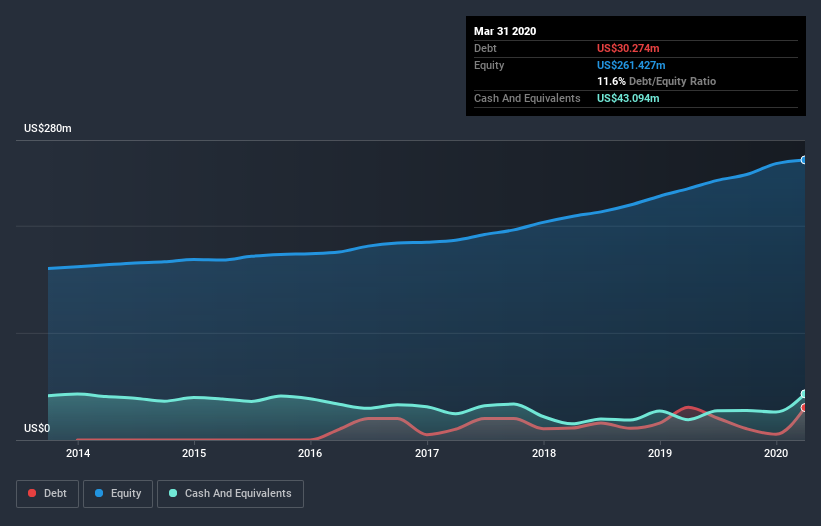We Think Miller Industries (NYSE:MLR) Can Stay On Top Of Its Debt

Howard Marks put it nicely when he said that, rather than worrying about share price volatility, 'The possibility of permanent loss is the risk I worry about... and every practical investor I know worries about.' It's only natural to consider a company's balance sheet when you examine how risky it is, since debt is often involved when a business collapses. As with many other companies Miller Industries, Inc. (NYSE:MLR) makes use of debt. But should shareholders be worried about its use of debt?
What Risk Does Debt Bring?
Debt assists a business until the business has trouble paying it off, either with new capital or with free cash flow. In the worst case scenario, a company can go bankrupt if it cannot pay its creditors. While that is not too common, we often do see indebted companies permanently diluting shareholders because lenders force them to raise capital at a distressed price. By replacing dilution, though, debt can be an extremely good tool for businesses that need capital to invest in growth at high rates of return. The first step when considering a company's debt levels is to consider its cash and debt together.
View our latest analysis for Miller Industries
What Is Miller Industries's Net Debt?
The chart below, which you can click on for greater detail, shows that Miller Industries had US$30.3m in debt in March 2020; about the same as the year before. However, it does have US$43.1m in cash offsetting this, leading to net cash of US$12.8m.
How Strong Is Miller Industries's Balance Sheet?
Zooming in on the latest balance sheet data, we can see that Miller Industries had liabilities of US$121.8m due within 12 months and liabilities of US$34.6m due beyond that. Offsetting this, it had US$43.1m in cash and US$168.9m in receivables that were due within 12 months. So it can boast US$55.5m more liquid assets than total liabilities.
This surplus suggests that Miller Industries is using debt in a way that is appears to be both safe and conservative. Due to its strong net asset position, it is not likely to face issues with its lenders. Simply put, the fact that Miller Industries has more cash than debt is arguably a good indication that it can manage its debt safely.
Miller Industries's EBIT was pretty flat over the last year, but that shouldn't be an issue given the it doesn't have a lot of debt. There's no doubt that we learn most about debt from the balance sheet. But you can't view debt in total isolation; since Miller Industries will need earnings to service that debt. So if you're keen to discover more about its earnings, it might be worth checking out this graph of its long term earnings trend.
But our final consideration is also important, because a company cannot pay debt with paper profits; it needs cold hard cash. Miller Industries may have net cash on the balance sheet, but it is still interesting to look at how well the business converts its earnings before interest and tax (EBIT) to free cash flow, because that will influence both its need for, and its capacity to manage debt. In the last three years, Miller Industries created free cash flow amounting to 15% of its EBIT, an uninspiring performance. For us, cash conversion that low sparks a little paranoia about is ability to extinguish debt.
Summing up
While it is always sensible to investigate a company's debt, in this case Miller Industries has US$12.8m in net cash and a decent-looking balance sheet. So we don't have any problem with Miller Industries's use of debt. We'd be motivated to research the stock further if we found out that Miller Industries insiders have bought shares recently. If you would too, then you're in luck, since today we're sharing our list of reported insider transactions for free.
At the end of the day, it's often better to focus on companies that are free from net debt. You can access our special list of such companies (all with a track record of profit growth). It's free.
This article by Simply Wall St is general in nature. It does not constitute a recommendation to buy or sell any stock, and does not take account of your objectives, or your financial situation. We aim to bring you long-term focused analysis driven by fundamental data. Note that our analysis may not factor in the latest price-sensitive company announcements or qualitative material. Simply Wall St has no position in any stocks mentioned.
Have feedback on this article? Concerned about the content? Get in touch with us directly. Alternatively, email editorial-team@simplywallst.com.



